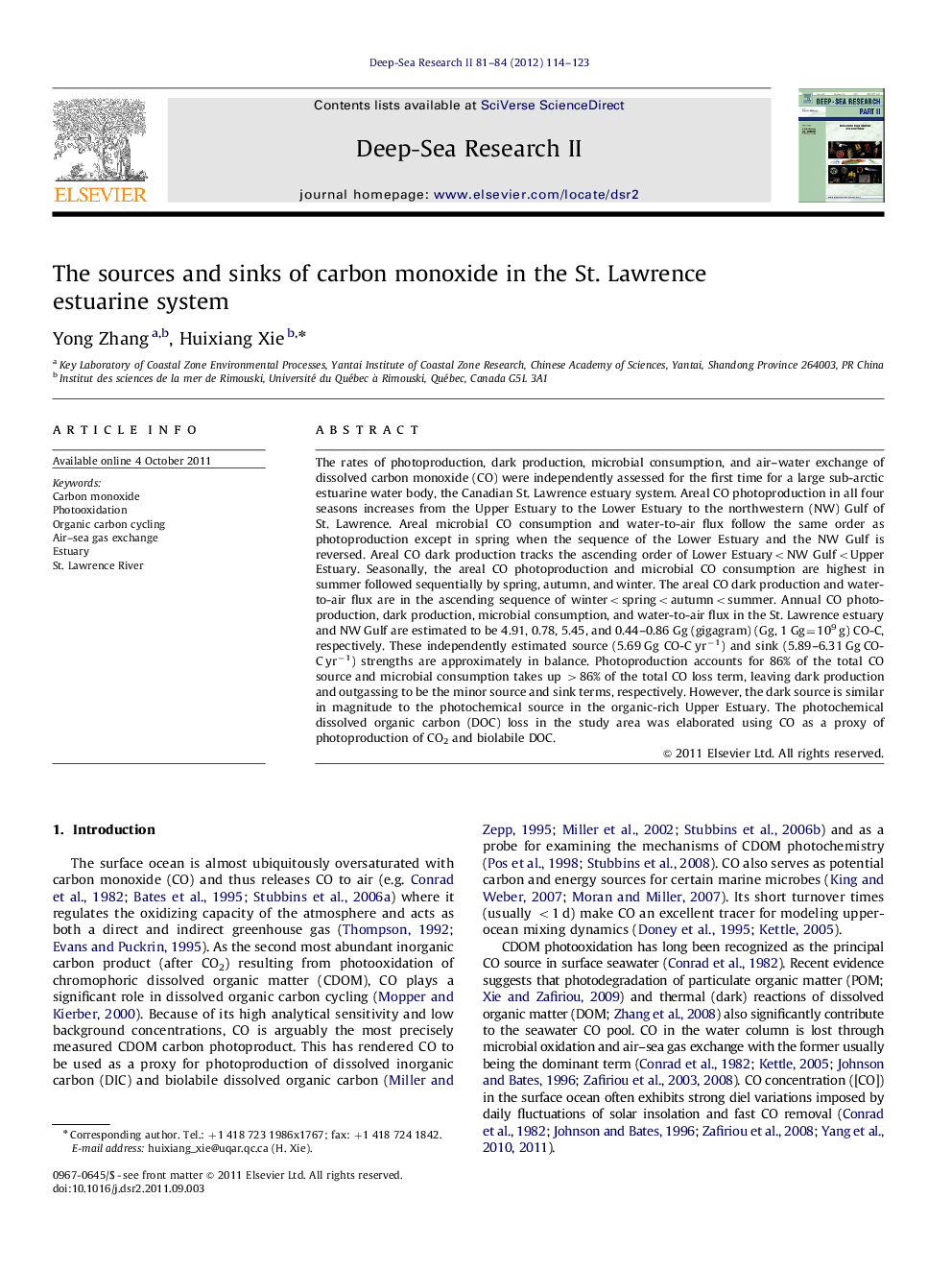| Article ID | Journal | Published Year | Pages | File Type |
|---|---|---|---|---|
| 4536723 | Deep Sea Research Part II: Topical Studies in Oceanography | 2012 | 10 Pages |
The rates of photoproduction, dark production, microbial consumption, and air–water exchange of dissolved carbon monoxide (CO) were independently assessed for the first time for a large sub-arctic estuarine water body, the Canadian St. Lawrence estuary system. Areal CO photoproduction in all four seasons increases from the Upper Estuary to the Lower Estuary to the northwestern (NW) Gulf of St. Lawrence. Areal microbial CO consumption and water-to-air flux follow the same order as photoproduction except in spring when the sequence of the Lower Estuary and the NW Gulf is reversed. Areal CO dark production tracks the ascending order of Lower Estuary
► The sources and sinks of CO in the St. Lawrence estuarine system are approximately in balance. ► Overall, CDOM-based photoproduction is the dominant source of CO while microbial consumption is the dominant sink. ► Dark production of CO is of similar importance to the photoproduction term in the organic-rich upper estuary.
